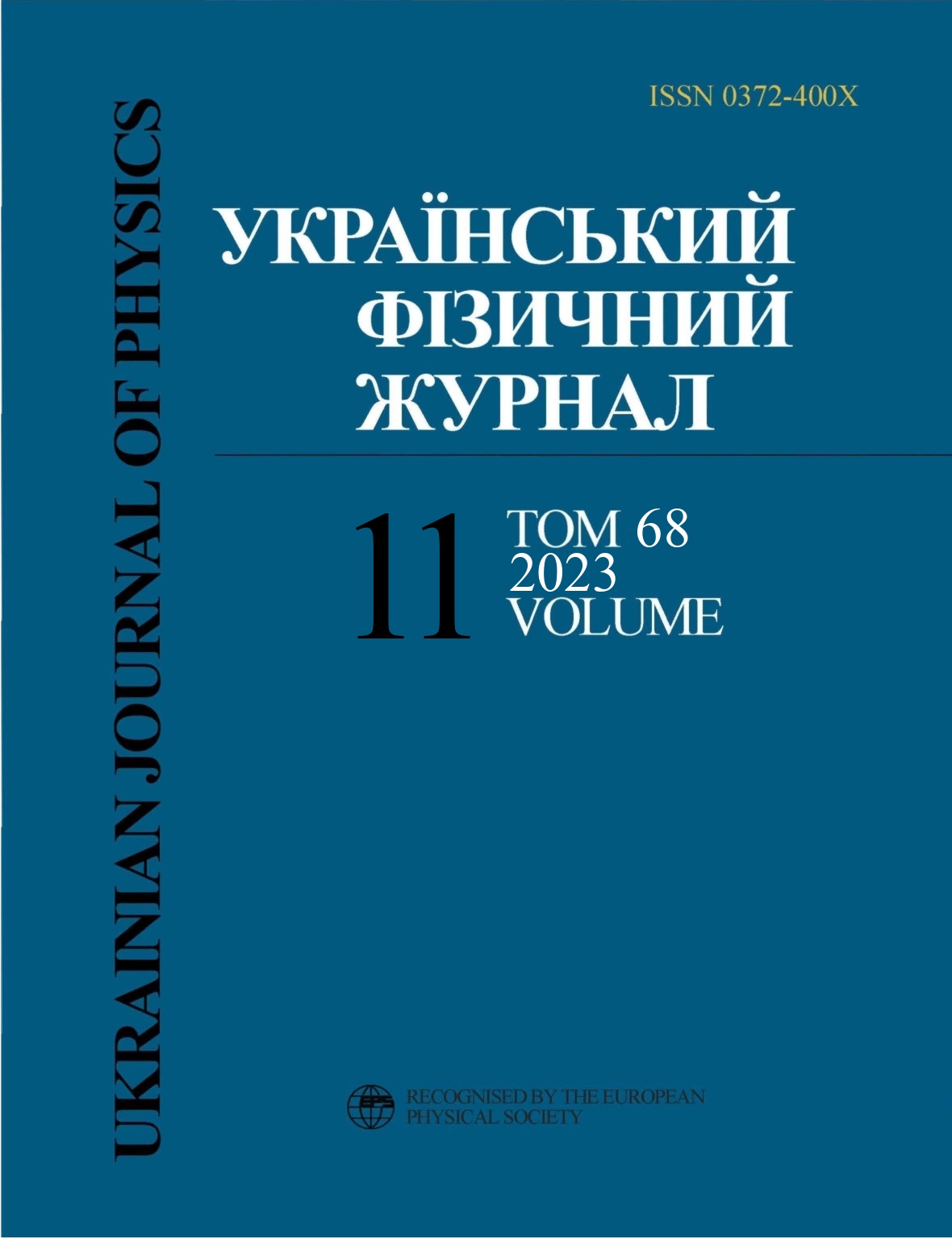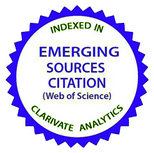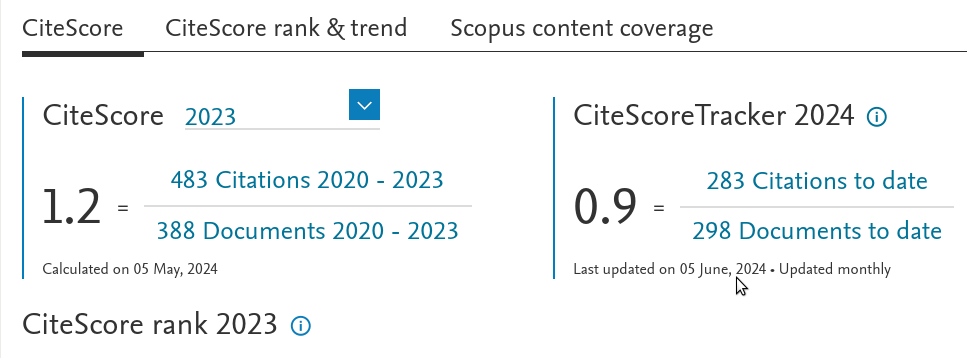Міжмолекулярні взаємодії в рідкій пропіоновій кислоті та її розчинах: дослідження за допомогою раманівської спектроскопії та теорії функціонала густини
DOI:
https://doi.org/10.15407/ujpe68.11.750Ключові слова:
пропiонова кислота, раманiвська спектроскопiя, теорiя функцiонала густини, мiжмолекулярнi взаємодiїАнотація
Дослiджено механiзм утворення молекулярних комплексiв у рiдкiй пропiоновiй кислотi та її розчинах. Анiзотро-пна складова смуги комбiнацiйного розсiювання валентних коливань C=O чистої пропiонової кислоти складається з трьох смуг з максимумами при 1661, 1700 i 1753 см−1. Було дослiджено вплив рiзних концентрацiй розчинникiв, таких як CCl4, ацетонiтрил i вода, на вказанi коливання. Механiзм утворення молекулярних комплексiв у розчинах дослiджено за допомогою розрахункiв DFT на рiвнi тео-рiї B3LYP/6-311++G(d, p). Проведено топологiчний аналiз методами AIM, RDG i NCI для дослiдження мiжмолеку-лярних взаємодiй у комплексах.
Посилання
R.J. Jakobsen, Y. Mikawa, J.W. Brasch. Far infrared studies of hydrogen bonding in carboxylic acids - I. Formic and acetic acids. Spectrochim. Acta A 23 (7), 2199 (1967).
https://doi.org/10.1016/0584-8539(67)80107-7
K. Nakamoto, S. Kishida. Normal coordinate analyses of hydrogen-bonded compounds. I. Monomeric formic acid and acetic acid. J. Chem. Phys. 41 (6), 1554 (1964).
https://doi.org/10.1063/1.1726121
L.J. Bellamy, R.J. Pace. Hydrogen bonding in carboxylic acids - I. Oxalic acids. Spectrochim. Acta 19 (2), 435 (1963).
https://doi.org/10.1016/0371-1951(63)80055-7
R.J. Jakobsen, Y. Mikawa, J.W. Brasch. Far infrared studies of hydrogen bonding in carboxylic acids - II. The nalkyl acids, propanoic to undecanoic. Spectrochim. Acta A 25 (4), 839 (1969).
https://doi.org/10.1016/0584-8539(69)80057-7
K.A.E. Meyer, A. Nejad. CC-stretched formic acid: Isomerisation, dimerisation, and carboxylic acid complexation. Phys. Chem. Chem. Phys. 23 (32), 17208 (2021).
https://doi.org/10.1039/D1CP02700J
K.A.E. Meyer, M.A. Suhm. Vibrational exciton coupling in homo and hetero dimers of carboxylic acids studied by linear infrared and raman jet spectroscopy. J. Chem. Phys. 149 (10), 104307 (2018).
https://doi.org/10.1063/1.5043400
T.Yu. Nikolaenko, L.A. Bulavin, D.N. Govoruna. Quantum mechanical interpretation of the IR Spectrum of 2-deoxy-D-ribose in the oh group stretching vibration region. J. Appl. Spectr. 78 (5), 751 (2011).
https://doi.org/10.1007/s10812-011-9528-4
P. Excoffon, Y. Marechal. Infrared spectra of H-bonded systems: Saturated carboxylic acid dimers. Spectrochim. Acta A 28 (2), 269 (1972).
https://doi.org/10.1016/0584-8539(72)80251-4
M. Faubel, Th. Kisters. Non-equilibrium molecular evaporation of carboxylic acid dimers. Nature 339 (6225), 527 (1989).
https://doi.org/10.1038/339527a0
J. Chen, Ch.L. Brooks, 3rd, H.A. Scheraga. Revisiting the carboxylic acid dimers in aqueous solution: Interplay of hydrogen bonding, hydrophobic interactions, and entropy. J. Phys. Chem. B 112 (2), 242 (2008).
https://doi.org/10.1021/jp074355h
G.M. Florio, T.S. Zwier, E.M. Myshakin, K.D. Jordan, E.L. Sibert. III. Theoretical modeling of the oh stretch infrared spectrum of carboxylic acid dimers based on firstprinciples anharmonic couplings. J. Chem. Phys. 118 (4), 1735 (2003).
https://doi.org/10.1063/1.1530573
C. Colominas, J. Teixido, J. Cemeli, F.J. Luque, M. Orozco. Dimerization of carboxylic acids: Reliability of theoretical calculations and the effect of solvent. J. Phys. Chem. B 102 (12), 2269 (1998).
https://doi.org/10.1021/jp973414w
A. Jumabaev, U. Holikulov, H. Hushvaktov, A. Absanov, L. Bulavin. Interaction of valine with water molecules: Raman and dft study. Ukr. J. Phys. 67 (8), 602 (2022).
https://doi.org/10.15407/ujpe67.8.602
M.Kh. Khodiev, U.A. Holikulov, N. Issaoui, O.M. AlDossary, L.G. Bousiakoug, N.L. Lavrik. Estimation of electrostatic and covalent contributions to the enthalpy of h-bond formation in h-complexes of 1,2,3-benzotriazole with proton-acceptor molecules by IR spectroscopy and DFT calculations. J. King Saud Univ. Sci. 35 (3), 102530 (2023).
https://doi.org/10.1016/j.jksus.2022.102530
G.A. Pitsevich, A.E. Malevich, E.N. Kozlovskaya, I.Yu. Doroshenko, V. Sablinskas, V.E. Pogorelov, D. Dovgal, V. Balevicius. Anharmonic analysis of CH and OH stretching vibrations of the formic acid dimer. Vib. Spectrosc. 79, 67 (2015).
https://doi.org/10.1016/j.vibspec.2015.05.003
R. Kalescky, E. Kraka, D. Cremer. Accurate determination of the binding energy of the formic acid dimer: The importance of geometry relaxation. J. Chem. Phys. 140 (8), 084315 (2014).
https://doi.org/10.1063/1.4866696
K.G. Goroya, Yu. Zhu, P. Sun, Ch. Duan. High resolution jet-cooled infrared absorption spectra of the formic acid dimer: A reinvestigation of the C-O stretch region. J. Chem. Phys. 140 (16), 164311 (2014).
https://doi.org/10.1063/1.4872367
W. Qian, S. Krimm. Origin of the CO stretch mode splitting in the formic acid dimer. J. Phys. Chem. 100 (35), 14602 (1996).
https://doi.org/10.1021/jp9610123
J. Dybal, T.C. Cheam, S. Krimm. C=O stretch mode splitting in the formic acid dimer: Electrostatic models of the intermonomer interaction. J. Mol. Struct. 159 (1-2), 183 (1987).
https://doi.org/10.1016/0022-2860(87)85016-0
F. Bardak, C. Karaca, S. Bilgili, A. Atac, T. Mavis, A.M. Asiri, M. Karabacak, E. Kose. Conformational, electronic, and spectroscopic characterization of isophthalic acid (monomer and dimer structures) experimentally and by DFT. Spectrochim. Acta A Mol. Biomol. Spectrosc. 165, 33 (2016).
https://doi.org/10.1016/j.saa.2016.03.050
H.H. Pham, Ch.D. Taylor, N.J. Henson. First-principles prediction of the effects of temperature and solvent selection on the dimerization of benzoic acid. J. Phys. Chem. B 117 (3), 868 (2013).
https://doi.org/10.1021/jp3062465
N. Martsinovich, A. Troisi. Modeling the self-assembly of benzenedicarboxylic acids using monte carlo and molecular dynamics simulations. J. Phys. Chem. C Nanomater. Interfaces 114 (10), 4376 (2010).
https://doi.org/10.1021/jp911671b
R. Alcala, S. Mart'inez-Carrera. The crystal structure of isophthalic acid. Acta Crystallogr. B 28 (6), 1671 (1972).
https://doi.org/10.1107/S0567740872004844
J.L. Derissen. The crystal structure of isophthalic acid. Acta Crystallogr. B 30 (11), 2764 (1974).
https://doi.org/10.1107/S056774087400803X
Jin-Ling Mi, Le Chen, Ming-Yang He. 5-fluoro-isophthalic acid. Acta Crystallogr. Sect. E Struct. Rep. Online 67 (3), o590 (2011).
https://doi.org/10.1107/S1600536811004004
F.H. Tukhvatullin, U.N. Tashkenbaev, A. Jumaboev, S.A. Osmanov, Z.U. Mamatov, H.A. Hushvaktov. The shape of different polarized components of 1710 cm−1 raman band for methyl ethyl ketone (2-butanone) and its solutions. Ukr. J. Phys. 46 (9), 922 (2001).
Th. Gomti Devi, Ganesh Upadhayay. Solvent dependent raman bandshape analysis on CO containing molecules: Vibrational relaxation study. Spectrochim. Acta A Mol. Biomol. Spectrosc. 91, 106 (2012).
https://doi.org/10.1016/j.saa.2012.01.064
M.J. Frisch, G.W. Trucks, H.B. Schlegel et al. Gaussian 09, 2009. Gaussian Inc. Wallingford CT.
R.F.W. Bader. Atoms in molecules. Acc. Chem. Res. 18 (1), 9 (1985).
https://doi.org/10.1021/ar00109a003
T.Yu. Nikolaienko, E.S. Kryachko, G.A. Dolgonos. On the existence of He-He bond in the endohedral fullerene He2@C60. J. Computational Chem. 39 (18), 1090 (2018).
https://doi.org/10.1002/jcc.25061
T.Yu. Nikolaienko, E.S. Kryachko. Formation of dimers of light noble atoms under encapsulation within fullerene's voids. Nanoscale Res. Lett. 10 (1), 185 (2015).
https://doi.org/10.1186/s11671-015-0871-x
E.S. Kryachko, T.Yu. Nikolaienko. He2@C60: Thoughts of the concept of a molecule and of the concept of a bond in quantum chemistry. Intern. J. Quantum Chem. 115 (14), 859 (2015).
https://doi.org/10.1002/qua.24916
Tian Lu, Feiwu Chen. Multiwfn: A multifunctional wavefunction analyzer. J. Comput. Chem. 33 (5), 580 (2012).
https://doi.org/10.1002/jcc.22885
W. Humphrey, A. Dalke, K. Schulten. VMD: Visual molecular dynamics. J. Mol. Graph. 14 (1), 33 (1996).
https://doi.org/10.1016/0263-7855(96)00018-5
Th. Gomti Devi, Bhargab Borah. Non-coincidence effect study of NN-Dibutyl formamide in binary liquid mixtures. J. Mol. Liq. 309, 113174 (2020).
https://doi.org/10.1016/j.molliq.2020.113174
Kh. Khushvaktov, A. Jumabaev, V. Pogorelov, U. Tashkenbaev, A. Absanov, G. Sharifov, B. Amrullaeva. Intermolecular hydrogen bond in acetic acid solutions. Raman spectra and ab initio calculations. American J. Phys. Appl. 6 (6), 169 (2019).
E.N. Kozlovskaya, G.A. Pitsevich, A.E. Malevich, O.P. Doroshenko, V.E. Pogorelov, I.Yu. Doroshenko, V. Balevicius, V. Sablinskas, A.A. Kamnev. Raman spectroscopic and theoretical study of liquid and solid water within the spectral region 1600-2300 cm−1. Spectrochim. Acta A Mol. Biomol. Spectrosc. 196, 406 (2018).
https://doi.org/10.1016/j.saa.2018.01.071
R.F.W. Bader. A quantum theory of molecular structure and its applications. Chem. Rev. 91 (5), 893 (1991).
https://doi.org/10.1021/cr00005a013
N. Chetry, Th. Gomti Devi. Intermolecular interaction study of l-threonine in polar aprotic solvent: Experimental and theoretical study. J. Mol. Liq. 338, 116689 (2021).
https://doi.org/10.1016/j.molliq.2021.116689
Sh.S. Malaganvi, J.T. Yenagi, J. Tonannavar. Experimental, DFT dimeric modeling and AIM study of H-bondmediated composite vibrational structure of Chelidonic acid. Heliyon 5 (5), e01586 (2019).
https://doi.org/10.1016/j.heliyon.2019.e01586
I. Rozas, I. Alkorta, J. Elguero. Behavior of ylides containing N, O, and C atoms as hydrogen bond acceptors. J. Am. Chem. Soc. 122 (45), 11154 (2000).
https://doi.org/10.1021/ja0017864
H. Roohi, A.-R. Nowroozi, E. Anjomshoa. H-bonded complexes of uracil with parent nitrosamine: A quantum chemical study. Comput. Theor. Chem. 965 (1), 211 (2011).
https://doi.org/10.1016/j.comptc.2011.01.048
T-H. Tang, E. Deretey, S.J. Knak Jensen, I.G. Csizmadia. Hydrogen bonds: Relation between lengths and electron densities at bond critical points. Eur. Phys. J. D 37 (2), 217 (2006).
https://doi.org/10.1140/epjd/e2005-00317-0
E. Espinosa, E. Molins, C. Lecomte. Hydrogen bond strengths revealed by topological analyses of experimentally observed electron densities. Chem. Phys. Lett. 285 (3-4), 170 (1998).
https://doi.org/10.1016/S0009-2614(98)00036-0
L.F. Pacios. Topological descriptors of the electron density and the electron localization function in hydrogen bond dimers at short intermonomer distances. J. Phys. Chem. A 108 (7), 1177 (2004).
https://doi.org/10.1021/jp030978t
N.S. Venkataramanan, A. Suvitha. Nature of bonding and cooperativity in linear DMSO clusters: A DFT, AIM and NCI analysis. J. Mol. Graph. Model. 81, 50 (2018).
Downloads
Опубліковано
Як цитувати
Номер
Розділ
Ліцензія
Ліцензійний Договір
на використання Твору
м. Київ, Україна
Відповідальний автор та співавтори (надалі іменовані як Автор(и)) статті, яку він (вони) подають до Українського фізичного журналу, (надалі іменована як Твір) з одного боку та Інститут теоретичної фізики імені М.М. Боголюбова НАН України в особі директора (надалі – Видавець) з іншого боку уклали даний Договір про таке:
1. Предмет договору.
Автор(и) надає(ють) Видавцю безоплатно невиключні права на використання Твору (наукового, технічного або іншого характеру) на умовах, визначених цим Договором.
2. Способи використання Твору.
2.1. Автор(и) надає(ють) Видавцю право на використання Твору таким чином:
2.1.1. Використовувати Твір шляхом його видання в Українському фізичному журналі (далі – Видання) мовою оригіналу та в перекладі на англійську (погоджений Автором(ами) і Видавцем примірник Твору, прийнятого до друку, є невід’ємною частиною Ліцензійного договору).
2.1.2. Переробляти, адаптувати або іншим чином змінювати Твір за погодженням з Автором(ами).
2.1.3. Перекладати Твір у випадку, коли Твір викладений іншою мовою, ніж мова, якою передбачена публікація у Виданні.
2.2. Якщо Автор(и) виявить(лять) бажання використовувати Твір в інший спосіб, як то публікувати перекладену версію Твору (окрім випадку, зазначеного в п. 2.1.3 цього Договору); розміщувати повністю або частково в мережі Інтернет; публікувати Твір в інших, у тому числі іноземних, виданнях; включати Твір як складову частину інших збірників, антологій, енциклопедій тощо, то Автор(и) мають отримати на це письмовий дозвіл від Видавця.
3. Територія використання.
Автор(и) надає(ють) Видавцю право на використання Твору способами, зазначеними у п.п. 2.1.1–2.1.3 цього Договору, на території України, а також право на розповсюдження Твору як невід’ємної складової частини Видання на території України та інших країн шляхом передплати, продажу та безоплатної передачі третій стороні.
4. Строк, на який надаються права.
4.1. Договір є чинним з дати підписання та діє протягом усього часу функціонування Видання.
5. Застереження.
5.1. Автор(и) заявляє(ють), що:
– він/вона є автором (співавтором) Твору;
– авторські права на даний Твір не передані іншій стороні;
– даний Твір не був раніше опублікований і не буде опублікований у будь-якому іншому виданні до публікації його Видавцем (див. також п. 2.2);
– Автор(и) не порушив(ли) права інтелектуальної власності інших осіб. Якщо у Творі наведені матеріали інших осіб за виключенням випадків цитування в обсязі, виправданому науковим, інформаційним або критичним характером Твору, використання таких матеріалів здійснене Автором(ами) з дотриманням норм міжнародного законодавства і законодавства України.
6. Реквізити і підписи сторін.
Видавець: Інститут теоретичної фізики імені М.М. Боголюбова НАН України.
Адреса: м. Київ, вул. Метрологічна 14-б.
Автор: Електронний підпис від імені та за погодження всіх співавторів.

















